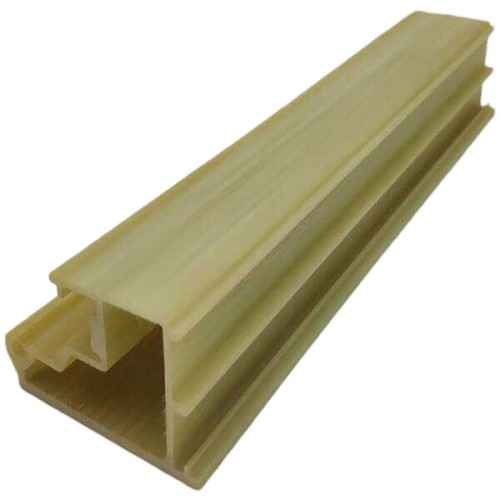High-Performance Polyurethane Fiberglass Window Profiles for Energy-Efficient and Durable Window Systems
Polyurethane Fiberglass Window Profile
The Polyurethane Fiberglass Window Profile represents a cutting-edge solution in modern fenestration systems. Combining the rigidity of fiberglass with the thermal insulation of polyurethane, this composite material offers exceptional performance for residential and commercial applications.
Manufacturing Process
These profiles are produced using the pultrusion technique, where continuous strands of fiberglass are impregnated with polyurethane resin and pulled through a heated die. This process ensures uniformity, high strength, and precise dimensions in the resulting fiberglass-reinforced polyurethane profiles.
Material Classification
The Polyurethane Fiberglass Window Profile falls under the category of composite materials, specifically glass fiber reinforced polyurethane (GFRP). This classification highlights its hybrid nature, combining the benefits of both fiberglass and polyurethane.
Specifications
-
Thermal Conductivity: Approximately 0.22 W/m·K, indicating excellent insulation properties.
-
Linear Thermal Expansion: 0.5 × 10⁻⁵ K⁻¹, ensuring dimensional stability across temperature variations.
-
Bending Strength: Up to 1442 MPa, providing robust structural integrity.
-
Fire Resistance: Rated above 1 hour, enhancing safety in building applications.
-
Corrosion Resistance: Excellent resistance to acids, alkalis, and salts, suitable for various environmental conditions.
Applications
These profiles are ideal for:
-
Window and Door Frames: Providing structural support and thermal insulation.
-
Curtain Walls: Serving as a lightweight, durable alternative to traditional materials.
-
Skylights and Facades: Offering design flexibility and energy efficiency.
-
Industrial Enclosures: Resisting harsh chemicals and environmental factors.
Comparison with Other Materials
Compared to traditional materials:
-
Aluminum: While aluminum offers strength, it has higher thermal conductivity, leading to energy losses.
-
PVC: PVC provides good insulation but lacks the structural strength of fiberglass composites.
-
Wood: Wood has natural aesthetics but is susceptible to moisture and requires regular maintenance.
The Polyurethane Fiberglass Window Profile combines the strengths of these materials while mitigating their weaknesses.
Installation
Installation of these profiles is straightforward:
-
Preparation: Ensure the opening is clean and level.
-
Placement: Fit the profile into the opening, checking for proper alignment.
-
Securing: Use appropriate fasteners to anchor the profile securely.
-
Sealing: Apply sealant to prevent air and water infiltration.
Due to their lightweight nature, these profiles are easier to handle and install compared to heavier materials.yctaiyun.en.made-in-china.com+4Profiel+4Rhinotrusion+4
Conclusion
The Polyurethane Fiberglass Window Profile stands out as a superior choice for modern construction needs. Its combination of strength, thermal efficiency, and durability makes it an excellent investment for energy-conscious and design-focused projects.

